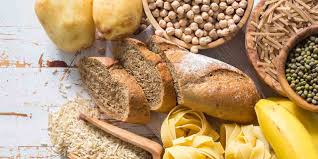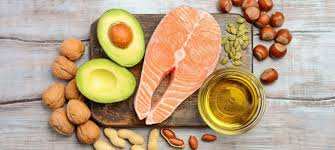Physical Address
304 North Cardinal St.
Dorchester Center, MA 02124
Physical Address
304 North Cardinal St.
Dorchester Center, MA 02124
Here, TrueSport Expert Stephanie Miezin, MS, RD, CSSD, the Director of Nutrition for the NWSL team, KC Current, is explaining macronutrients and breaking down the difference between fat, protein, and carbohydrates so you can help your athlete eat the right thing at the right time. And don’t forget to visit the TrueSport Nutrition Guide for more fueling guidance!
Macronutrients are the nutrients that the human body requires in large amounts to function properly, comprising carbohydrates, proteins, and fats. Carbohydrates serve as the body’s primary energy source, proteins are essential for building and repairing tissues, and fats provide energy storage and support cell structure. Each macronutrient serves distinct physiological functions: carbohydrates fuel immediate energy needs, proteins build and maintain muscles and enzymes, and fats insulate organs, aid hormone production, and facilitate absorption of fat-soluble vitamins.
“Macronutrients are where all energy comes from in our food,” explains Miezin. “Anytime there are calories—a measure of energy—in a food, they come from a combination of carbs, proteins, and/or fats.”
There are four macronutrients: carbohydrates, fat, protein, and alcohol. (For the sake of this article, we won’t be talking about alcohol!)

Why we need it: “Carbs are arguably the most important fuel source for athletes to be thinking about,” says Miezin. “They are the body’s preferred and primary source of energy. The brain in particular really loves carbohydrates and requires them to run at its best.”

When consuming carbohydrates, your body converts them into glucose, the essential fuel that powers bodily functions. “We recognize that higher intensity activities demand more carbohydrates, highlighting their importance in athletic nutrition,” she notes. “Research confirms that insufficient carbohydrate consumption before exercise or inadequate replenishment during extended activities significantly impairs performance intensity.”
Sources: “Carbohydrates exist in numerous food categories, making adequate intake relatively accessible,” explains Miezin. Carbohydrates typically fall into several classifications, ranging from vegetables to desserts.
Regarding vegetables: Vegetables contain carbohydrates but in minimal quantities relative to their volume. One explanation is their high fiber content, which promotes digestive and gut health but provides no energy. Consuming only leafy greens will not provide sufficient energy for athletic performance, despite their technical carbohydrate content.
Consumption timing: Carbohydrates should appear in every meal, with nutrient-dense carbohydrate sources like potatoes, legumes, and whole wheat pasta becoming more appropriate as the interval between eating and training increases. “These nutrient-rich options are typically best consumed during meals allowing sufficient pre-exercise digestion time, as their fiber content might cause digestive discomfort if eaten too close to physical activity,” advises Miezin.
Conversely, before, during, and following practice and competition, athletes must ensure they’re supplying their bodies with readily available energy sources, which is when lower nutrient-density carbohydrate foods become prioritized. “These quick-digesting carbohydrates also play a crucial role in helping athletes fulfill their overall energy requirements, because consumption capacity for foods like potatoes has limits,” says Miezin. “Each carbohydrate type serves a specific purpose at appropriate times.”
Quantity guidelines: Young athletes should consume approximately 3-8 grams of carbohydrate per kilogram of body weight. Carbohydrates should constitute roughly 45-60 percent of total caloric intake—with increased percentages during intensive training periods and competition. Miezin emphasizes that athletes needn’t achieve perfect macronutrient percentage balance. This represents a general recommendation rather than a strict requirement.
Why we need it: “All of our cells are made of protein, so we need protein to consistently turn over all cells in the body,” says Miezin. “Muscles, bone, tissue, intestines—protein is critically important. For athletes, it’s particularly important to aid muscle repair, recovery, and growth. Protein tells the body it’s time to repair the muscle, and it gives it the building blocks to do so.”
However, unlike carbohydrates, protein is not a good fuel source for the body because proteins are hard to break down. “The body really doesn’t like to burn it as fuel,” Miezin adds.

Sources: Protein is found in meat, poultry, fish, eggs, dairy, tofu, beans, nuts, seeds, whole grains, and protein-fortified foods. Select leaner animal proteins to minimize saturated fat intake, such as lower-fat percentage beef and skinless chicken. With dairy, choose low-fat options to reduce saturated fat consumption. Salmon and other seafood are beneficial exceptions, containing healthier unsaturated fats like omega-3s rather than saturated fats.
Timing: Protein should be incorporated into all meals and snacks throughout the day to support overall health and athletic recovery. Because protein is typically consumed in smaller quantities than carbohydrates, distributing intake across multiple eating occasions helps ensure adequate total consumption. Missing protein at one meal makes reaching daily targets significantly more challenging.
Quantity: Athletes generally require approximately 1.6 grams of protein per kilogram of body weight, which typically represents 20-35 percent of total caloric intake.
Why we need it: Macronutrients are the essential nutrients required in large amounts for human survival and optimal functioning. They include carbohydrates, proteins, and fats, each serving distinct physiological purposes. Carbohydrates provide immediate energy for bodily functions and physical activity, proteins build and repair tissues while supporting enzymatic reactions, and fats store energy, protect organs, facilitate hormone production, and enable absorption of fat-soluble vitamins (A, D, E, and K).

Where we get it: Carbohydrates come primarily from plant-based foods like grains, fruits, vegetables, and legumes. Protein sources include both animal products (meat, fish, eggs, dairy) and plant sources (legumes, nuts, seeds, and some grains). Beneficial fats are found in plant foods like avocados, nuts, seeds, and olive oil, as well as in fatty fish, while saturated fats from animal products should be consumed in moderation.
When to eat it: The optimal timing for macronutrient consumption varies based on individual needs and activity patterns. Carbohydrates are particularly important before and after physical exertion to fuel performance and replenish glycogen stores. Protein intake should be distributed throughout the day to support continuous tissue repair, with strategic consumption after exercise. Fats should be included in most meals but limited before intense physical activity due to their slower digestion rate.
How much to eat: Recommended macronutrient ratios typically range from 45-65% of calories from carbohydrates, 10-35% from protein, and 20-35% from fats, though these proportions should be personalized based on factors including age, sex, activity level, health status, and specific fitness or performance goals. Proper macronutrient balance supports energy levels, recovery processes, metabolic health, and overall physiological functioning.
https://www.usafieldhockey.com/news/2025/march/20/12-things-you-should-know-about-macronutrients
MORE: